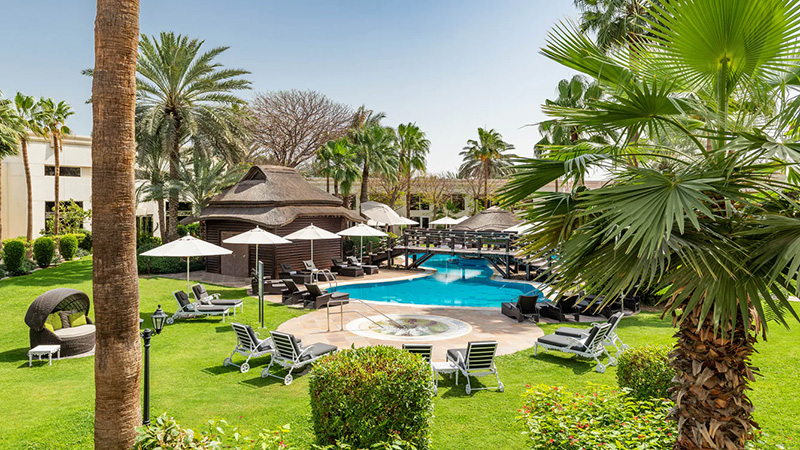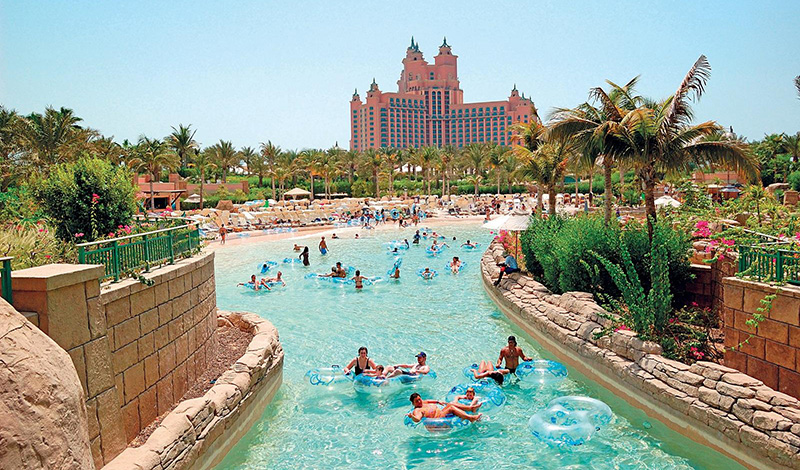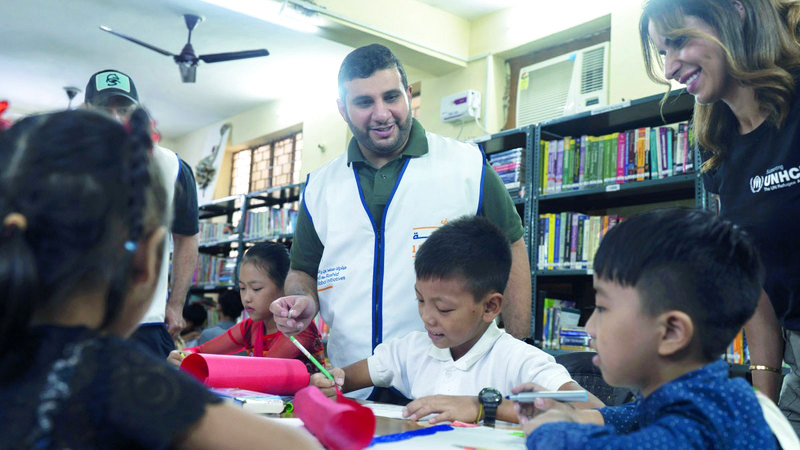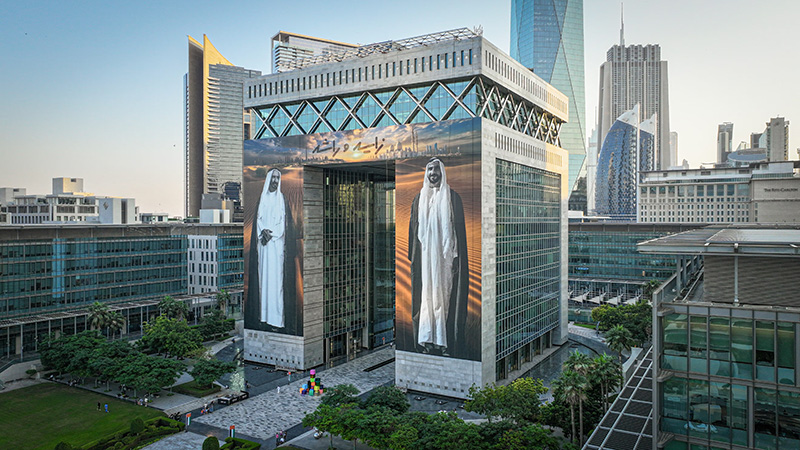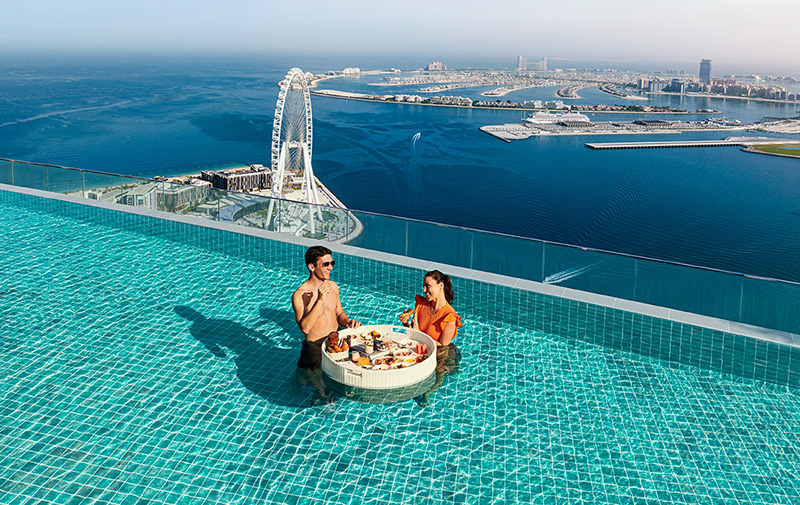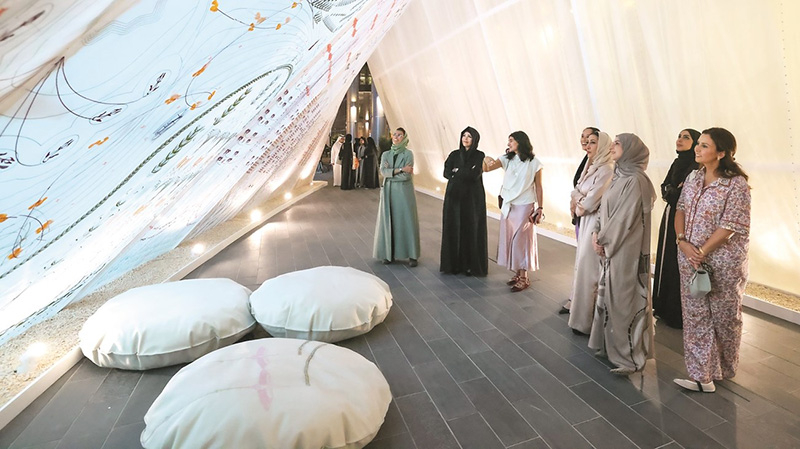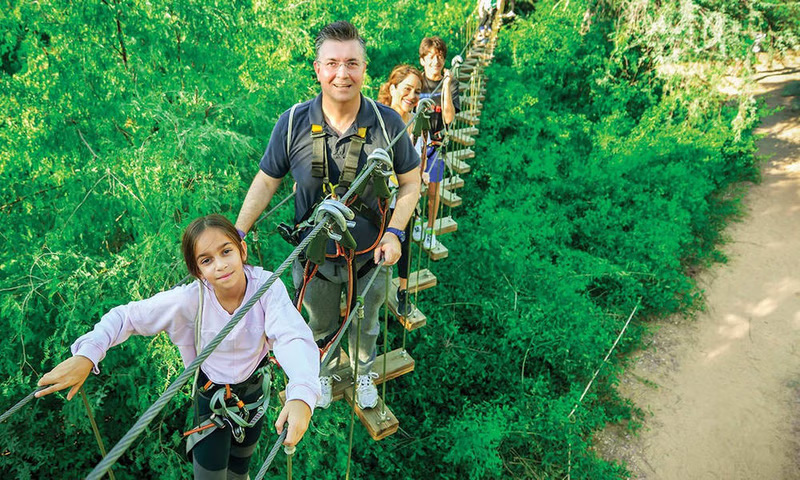
For millennia, the textile industry has stood as one of the pillars of the Middle East’s economy and culture. The Sumerians and Assyrians organized collective weaving workshops in temples and palaces to produce wool and linen, with early use of plant- and mineral-based dyes. On the Phoenician coast, artisans invented a purple dye extracted from murex sea snails, turning it into a luxury commodity exported to Mediterranean ports, so coveted it became a symbol of authority among the elites of Rome and Athens. During the Abbasid era, Baghdad and Damascus became centers for weaving silk brocaded with gold, exporting fine fabrics along the Silk Roads to Al-Andalus and Central Asia, embodying a marriage of technology and craftsmanship. In pre-Islamic Arabia, the markets of Dumat Al-Jandal and Ukaz served as annual forums where merchants traded textiles and precious goods under the protection of tribal customs. Today, the global textile sector still employs tens of millions of people and is valued at roughly $1.5 trillion, underscoring its enduring status as an immensely influential economic and cultural mainstay.

Establishment of Dubai Textile City Under Dubai Customs’ Supervision
In 2000, the Ports, Customs and Free Zone Corporation and the Textile Merchants Association (TEXMAS) signed an agreement under which TEXMAS was granted a plot of land in the Warsan South area (about 6 million square feet) to build a specialized textile free zone, known today as Dubai Textile City. Notably, the launch of this project coincided with the rise of a series of specialized “Dubai” cities spearheaded by Sheikh Mohammed bin Rashid Al Maktoum, then Crown Prince of Dubai, to bolster a knowledge-based economy. For example, Dubai Internet City was announced on 29 October 1999, and Dubai Media City officially launched on 4 November 2000. These new city initiatives were placed under the executive oversight of Mohammed Abdullah Al Gergawi, who at the time served as Director General of the Free Zone Authority for Technology, E-Commerce and Media, as well as Chairman of Dubai Internet City.
In September 2001, TEXMAS officials announced the start of construction, with plans to build on-site showrooms and warehouses. The city was officially opened in January 2006 after completion of the first phase, with development costs of around 8.8 billion dirhams (approximately $2.4 billion) raised from contributions by TEXMAS members, making it a dedicated complex for storing, showcasing, and re-exporting textiles. The zone is administered by JAFZA (Jebel Ali Free Zone Authority) under Dubai’s free zone regime, and companies operating there enjoy full exemption from customs duties, with a Dubai Customs office on-site to clear shipments directly.
Infrastructure and Strategic Location
Dubai Textile City is located in Warsan, near International City and the Dragon Mart complex, close to the intersection of Ras Al Khor Road (E44) and Sheikh Mohammed bin Zayed Road (E311). This strategic location provides easy access to Dubai International Airport and the emirate’s major seaports. From a logistics standpoint, the city benefits from its proximity to Jebel Ali Port and the national highway network, as well as practical connectivity to Dragon Mart and nearby bus routes, factors that cut transit time between warehouses and shipping points, lowering transportation costs.
The site spans roughly 6 million square feet, with about 2.2 million square feet of built-up area dedicated to warehouses, showrooms, and offices (figures recorded in the project’s launch reports). The complex offers approximately 295 units (initial operating figures at opening ranged from 280 to 295 units) in three size categories of roughly 230, 460, and 920 square meters each, equivalent to about 2,500, 5,000, and 10,000 square feet, to meet the needs of traders of various scales. At the initial launch, investors received a 15-year rent exemption, followed by rental rates about 50% below market for the subsequent 15 years, providing a significant incentive to early tenants.
Economic and Logistics Performance up to 2025
Since coming online in the mid-2000s, Dubai Textile City has had a tangible economic impact, reinvigorating the textile trade in the emirate. TEXMAS estimated the value of Dubai’s textile trade at the city’s opening to be around 8.8 billion dirhams (about $2.4 billion) annually, making textiles the second-largest contributor to Dubai’s trade at the time (after hydrocarbons). This volume has grown steadily over the years, driven by rising re-exports and an expanding base of trade partners. By 2010, the total value of textile trade in the UAE was estimated at roughly 12 billion dirhams. Growth continued into the next decade: the latest available data indicates the UAE’s textile and apparel market was worth over $10 billion (approximately 36.7 billion dirhams) in the early 2020s. Notably, the UAE exported about $3.5 billion in textiles in 2023, placing it among the world’s top 40 textile-exporting countries. These figures attest to the success of Dubai’s model, thanks to free-zone platforms like Textile City, the country has been able to boost re-exports to dozens of markets across Asia, Africa, and Europe.
On the logistics side, the city’s advanced infrastructure and modern management techniques have cut time and cost along the supply chain. Having a Dubai Customs office inside the city means customs clearance can be completed at the storage site itself, with full duty exemptions for goods being re-exported. The operators have continually updated their systems to keep up with best practices; today many of the city’s warehouses use digital tracking (RFID) and modern inventory management systems to increase accuracy and speed up stock-taking. The customs gates at the city are linked to an advanced electronic system called “Fabric Register”, a joint database between TEXMAS and Dubai Customs that tracks every fabric shipment from the moment it arrives at a port or airport until it leaves the city. This system has been integrated into a blockchain platform recently launched by Dubai Customs to achieve unprecedented levels of transparency and speed in clearance, with customs declarations now processed in mere minutes instead of days. These logistical efficiencies have given Dubai a competitive edge, making Textile City a preferred choice for traders seeking a hub that ensures their products reach multiple markets quickly. Indeed, Dubai today enjoys the status of a regional hub for textile re-exports, serving over 50 countries by leveraging its geographic location and world-class port and airport infrastructure.
Beyond aggregate trade values, the success of Dubai Textile City is reflected in sector-specific indicators. In a short time after its founding, the city attracted several major international textile traders who established regional distribution centers in Dubai. All warehouse units, around 280 in total, were quickly filled; the first phase of 150 warehouses was fully booked within weeks of its release in 2004, and after a second phase added 130 units, every space was taken even before the city’s official inauguration. This intense demand came not only from local merchants, but also from textile companies in neighboring countries such as India, Iran, and Syria that saw Dubai as an ideal platform to reach new customers. Flexible policies allowing companies to lease units, or even sub-lease them, provided a range of options for businesses of all sizes.
As a result of these combined incentives, Dubai has solidified its position as a regional hub for textile re-exports serving more than 50 countries. On the international trade front, data from the Kohan Textile Journal (August 2024) shows that the top destinations for the UAE’s textile re-exports include Saudi Arabia, Iran, Oman, and Bahrain, while China, India, Bangladesh, Turkey, and Italy are the leading source countries for the UAE’s textile imports. Likewise, statistics from DP World published in November 2019 indicate that four logistics and industrial zones, including Dubai Textile City, together contributed roughly a quarter of Dubai’s GDP in 2018, reinforcing the city’s status as a cornerstone of the emirate’s value-added supply chain.
Cultural and Social Dimensions of the Project
The impact of Dubai Textile City has not been confined to trade figures alone; it has extended into important social and cultural realms as well. Historically, the textile trade has been an integral part of Dubai’s social fabric. Traditional textile souks in Bur Dubai and Naif were long meeting grounds for merchants of diverse nationalities and cultures, where they would exchange goods, stories, and expertise.
This cultural legacy continued, and was strengthened, with the development of Textile City, as dozens of small family-run companies and textile artisans moved into modern facilities without losing the spirit of the craft or its traditional character. In the new city, Indian traders operate alongside Arab, Iranian, and Chinese merchants under one roof, each bringing their know-how and fabrics from different corners of the world. Dubai thus became a genuine meeting point for the textile treasures of East and West: fine Indian silk is available alongside European lace and embroidered African fabrics. This diversity of products and vendors has given the market a uniquely global flavor, making the experience of trading textiles in Dubai as much a journey through civilizations as it is a business transaction.
Dubai Textile City has also played a key role in empowering small-scale and artisanal enterprises. By offering units in various sizes with carefully calibrated rents, it enabled small entrepreneurs, such as emerging fashion designers and local tailoring workshops, to obtain workspace in a modern complex equipped with all necessary facilities. An Emirati designer or artisan tailor can now stroll through the city and find a vast selection of international fabrics readily available in quantities suited to small projects. This spares them from having to travel to distant markets or purchase enormous volumes from overseas manufacturers. One TEXMAS expert notes that Dubai’s competitive strength lies in providing a wide range of fabrics even to buyers with small or mid-sized orders, unlike some production hubs in the Far East that impose high minimum order requirements and take months to fulfill them. This flexibility has benefited craftspeople and local fashion workshops, enhancing their ability to innovate and quickly produce new designs using materials available locally. In doing so, the project has helped solidify an ecosystem that supports entrepreneurship in the UAE’s fashion and design sector, alongside other initiatives such as Dubai Design District launched to bolster the creative industries.
On a broader social level, bringing such a large number of companies together under one umbrella has created a microcosm of Dubai’s textile trade community. Today, more than 10,000 people work either directly or indirectly in the emirate’s textile sector, from importers and vendors to warehouse and transport workers to designers. The city affords these individuals daily opportunities to connect and collaborate, spawning a network of business and personal relationships that strengthen social cohesion. Many veteran traders have begun passing down their expertise to the younger generation through workshops and meetings organized by TEXMAS in the city’s halls, highlighting an important knowledge dimension: the transfer of skills and the promotion of a quality-focused culture in this traditional profession. Thus, the city’s contribution extends to preserving a proud industry heritage and adapting it to meet modern standards.
Since its inception, Dubai Textile City has embodied a pioneering vision of integrating economic, cultural, and environmental elements into a single development project. It serves as an economic catalyst that has reinforced Dubai’s status as an international textile trading hub, leveraging advanced infrastructure and strong investment incentives. It is also a cultural and social bridge, linking the rich heritage of the textile trade with a modern spirit of innovation, bringing together big traders and small artisans in one integrated ecosystem that has supported the local design and fashion sector. Equally, the city has not neglected sustainability, carrying an environmental responsibility in an era of climate challenges by adopting green building standards, recycling programs, and energy-saving technologies. The success story of Dubai Textile City reflects the essence of Dubai’s development model: a robust partnership between government and private sector, a forward-looking vision that places people (the trader, the consumer, and the worker) at its core, and the audacity to innovate in traditional sectors to turn them into economic strengths. And just as silk and cotton threads have woven connections between civilizations throughout history, Dubai is today weaving new bonds in the region with the threads of its projects, bonds founded on development, inclusivity, and sustainability.


